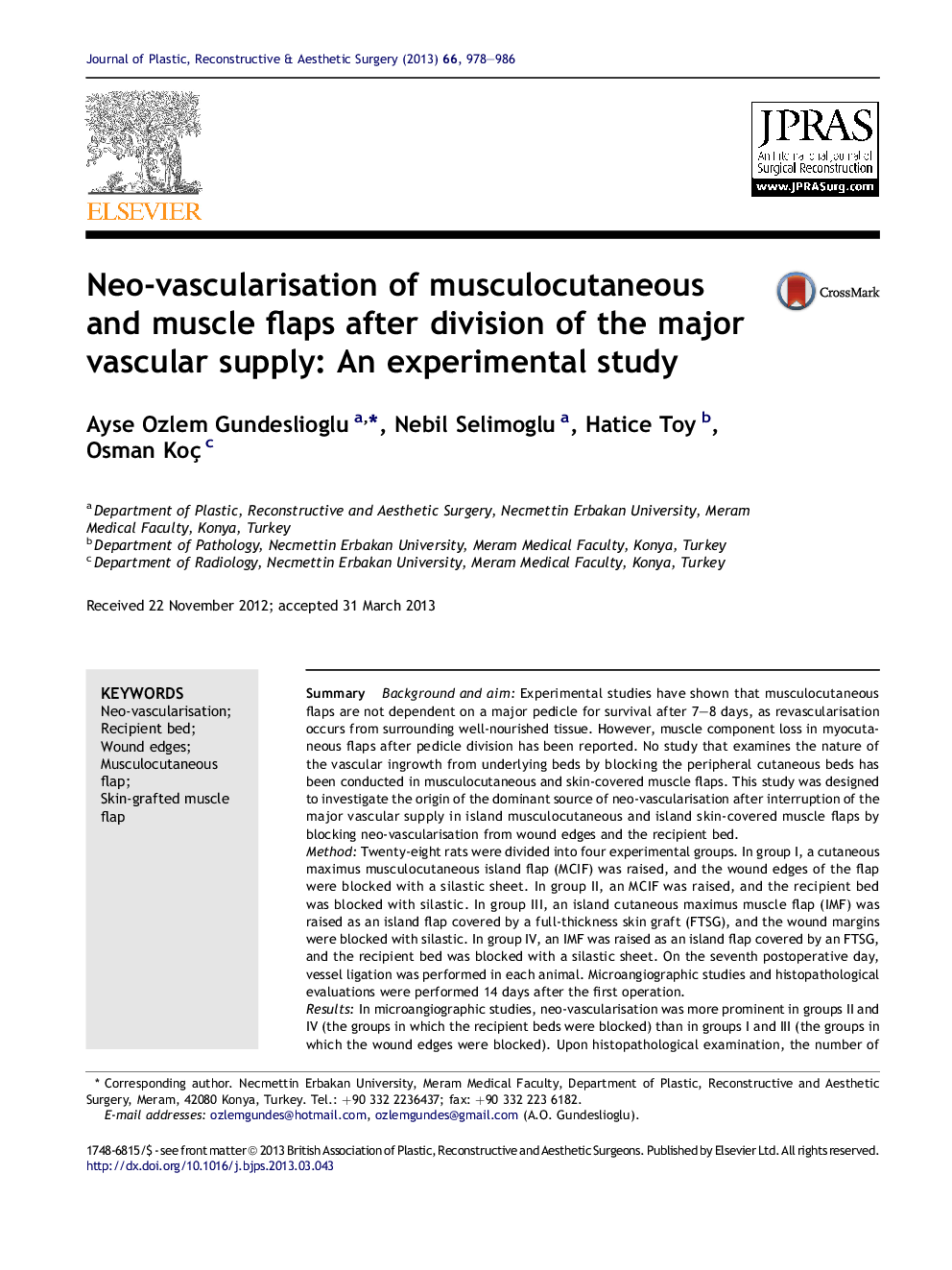| کد مقاله | کد نشریه | سال انتشار | مقاله انگلیسی | نسخه تمام متن |
|---|---|---|---|---|
| 4118645 | 1270336 | 2013 | 9 صفحه PDF | دانلود رایگان |

SummaryBackground and aimExperimental studies have shown that musculocutaneous flaps are not dependent on a major pedicle for survival after 7–8 days, as revascularisation occurs from surrounding well-nourished tissue. However, muscle component loss in myocutaneous flaps after pedicle division has been reported. No study that examines the nature of the vascular ingrowth from underlying beds by blocking the peripheral cutaneous beds has been conducted in musculocutaneous and skin-covered muscle flaps. This study was designed to investigate the origin of the dominant source of neo-vascularisation after interruption of the major vascular supply in island musculocutaneous and island skin-covered muscle flaps by blocking neo-vascularisation from wound edges and the recipient bed.MethodTwenty-eight rats were divided into four experimental groups. In group I, a cutaneous maximus musculocutaneous island flap (MCIF) was raised, and the wound edges of the flap were blocked with a silastic sheet. In group II, an MCIF was raised, and the recipient bed was blocked with silastic. In group III, an island cutaneous maximus muscle flap (IMF) was raised as an island flap covered by a full-thickness skin graft (FTSG), and the wound margins were blocked with silastic. In group IV, an IMF was raised as an island flap covered by an FTSG, and the recipient bed was blocked with a silastic sheet. On the seventh postoperative day, vessel ligation was performed in each animal. Microangiographic studies and histopathological evaluations were performed 14 days after the first operation.ResultsIn microangiographic studies, neo-vascularisation was more prominent in groups II and IV (the groups in which the recipient beds were blocked) than in groups I and III (the groups in which the wound edges were blocked). Upon histopathological examination, the number of vessels was significantly lower in group I and group III than in group II and group IV (p < 0.001).ConclusionsOur findings revealed that neo-vascularisation from either the recipient bed or the wound edges was sufficient to ensure full flap survival in musculocutaneous flaps, and skin-grafted muscle flaps do not need major axial vessels 7 days after flap elevation in rats if the recipient bed or wound edges are well-vascularised. The results also indicated that revascularisation mainly comes from the peripheral wound edges and is independent of flap type.
Journal: Journal of Plastic, Reconstructive & Aesthetic Surgery - Volume 66, Issue 7, July 2013, Pages 978–986